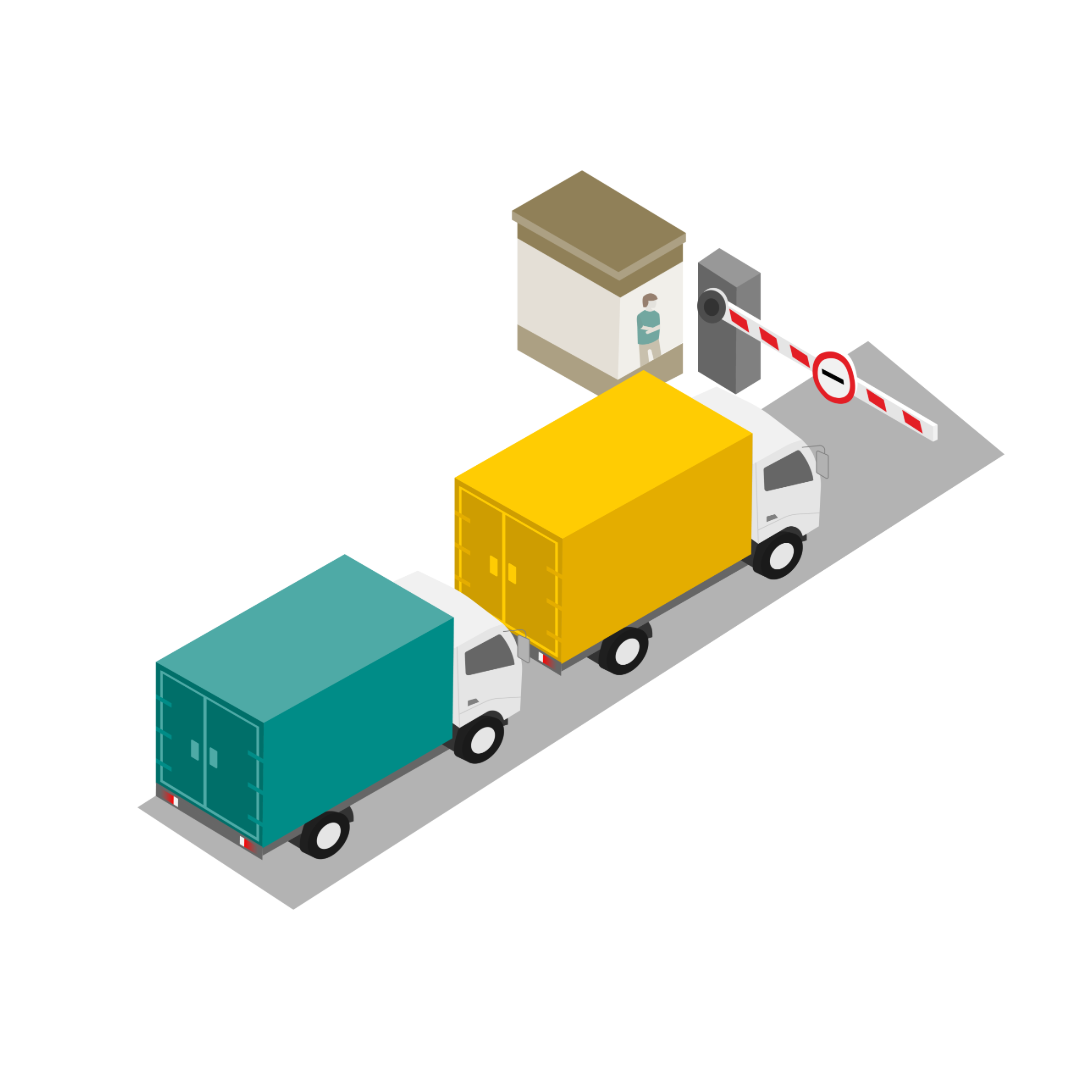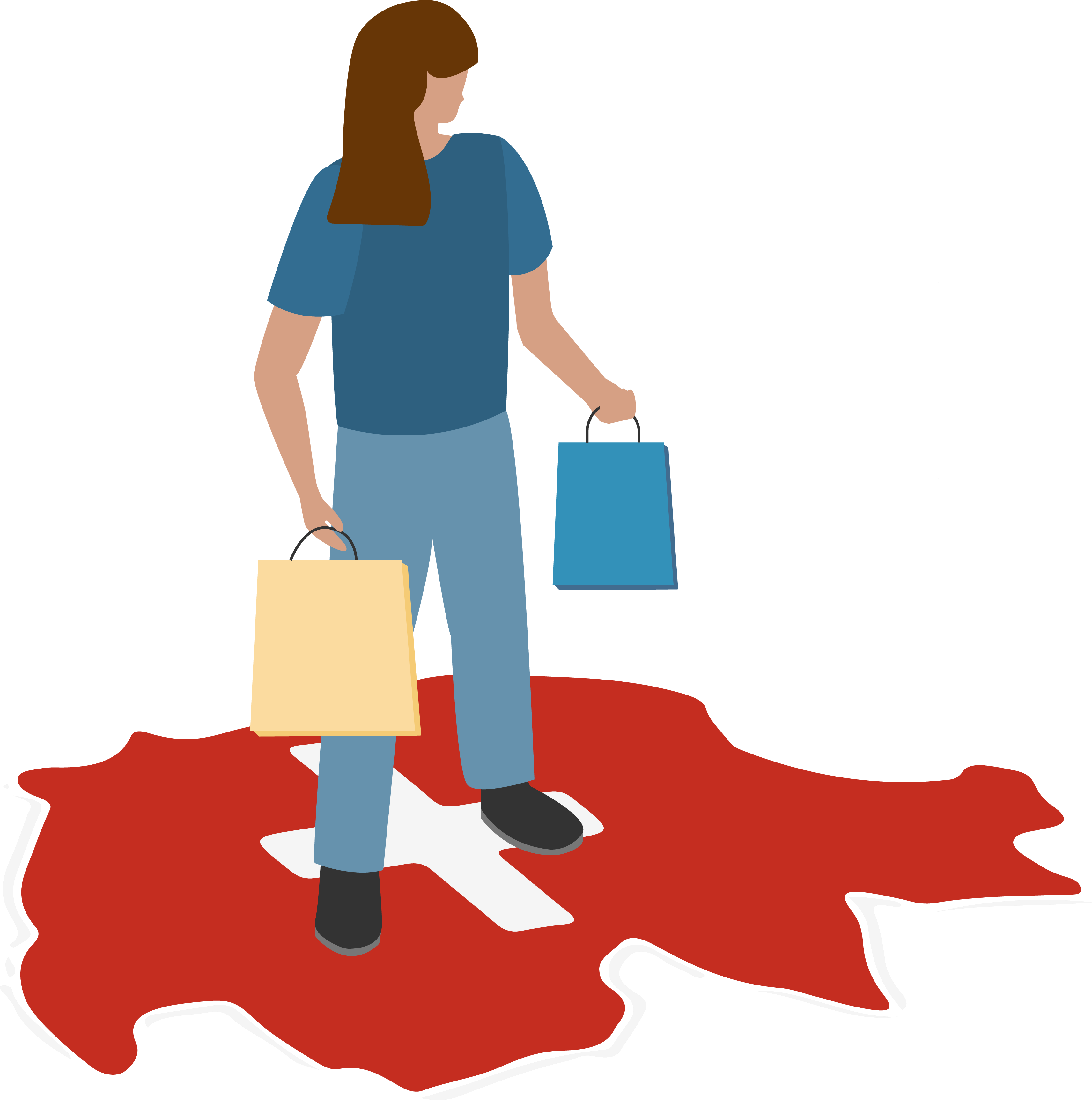Reduce shipping costs - how European online retailers save on exports to Switzerland
.png)
Mailbox Plus
With SmartGate Flex, Swiss Post has the perfect all-in-one solution for online retailers in the EU who want to reduce their e-commerce shipping costs when exporting to Switzerland and simplify the entire process.
- Transport to the Injection Hub in DE
- Customs clearance (export EU & import CH)
- Delivery in Switzerland
- Local Swiss returns management incl. processing and return customs clearance
- Return transport to the retailer warehouse
- IT integration via API interface
- Flexible customisation to meet the needs of customers
As you can see, SmartGate Flex is particularly interesting for online retailers who ship their goods pre-customs cleared - this is also referred to as DDP. This is an Incoterm and, put simply, means that retailers bear all costs such as customs clearance and taxes themselves.
For Swiss customers, this means that they no longer incur any costs; they receive the delivery as if they had ordered in Switzerland. It goes without saying that this greatly increases customer satisfaction!
As a professional e-commerce company in the EU, it is therefore almost mandatory to offer delivery to Switzerland on a DDP basis.
Regardless of whether you have your own shop or marketplace. Whether Shopify or Amazon. The decisive factor is the shipping method. Swiss customers know their customs very well and try to avoid ordering products abroad for which they then have to pay additional fees.
The classic counter-example to DDP is DAP. Here, the recipient pays all customs duties, taxes and fees. You will find a brief overview of this in the next section.
Want more details? Then read all about Incoterms in more detail in the Swiss Post blog article Incoterms DDP and DAP.
The typical DAP shipment in the postal or courier channel
Just so you know how not to do it: This is what classic DAP shipping looks like - but if you already deliver your products via DDP, you can skip this and continue reading here.

- The customer orders from your shop and pays for the goods plus shipping costs at check-out.
- You send the goods to Switzerland with a shipping service provider.
- This service provider takes care of customs clearance and pays all fees, customs duties and taxes in advance.
- The sender delivers the goods and demands the costs incurred plus an additional fee for their efforts back from the customer. The customer pays either upon delivery or in advance via app.
Much more efficient: DDP shipping - for example with SmartGate Flex
And this is what DDP shipping looks like:

- When checking out, your Swiss customers not only pay the value of the goods including shipping costs, but also customs duties, import sales tax and customs clearance fees - the final price therefore already includes all costs incurred.
- You send the goods to Switzerland with a shipping service provider.
- Your shipping service provider takes care of customs clearance and charges the costs directly to you.
- DDP shipping is also generally faster than classic DAP shipping. Delivery times can be more stable and shorter, especially at peak times. This is due to the fact that commercial, DDP-based customs clearance does not generate any physical handling in 99.99% of cases. Contact with customs is usually purely digital in nature and therefore maximally scalable.
- The customer receives their parcel as if they had ordered from a neighbouring town.
As you can see, DDP shipping is not only much more efficient, it also strengthens customer loyalty, increases CVR and ensures that customers come back – after all, everyone likes to shop with an online retailer that is so convenient!
Reduce shipping costs: 5 steps to success
Now we come to the 5 steps that can not only reduce your shipping costs in e-commerce, but also mean the perfect customer journey for your Swiss customers. In the end, everyone benefits: your customers are happy about the smooth shipping of their ordered products and you benefit from massive cost savings.
Want to reduce your shipping costs? Then use our Optimizer to find out how you can optimise your shipping processes.
Step 1: Data is crucial for international shipping
The data required for customs clearance must be documented by customs. This includes, for example, product descriptions, weights and customs tariff numbers. Each parcel is processed individually by hand, which can take up to half an hour - even longer for goods worth over EUR 1000.-. This processing of customs clearance data can cost valuable time - the officials have it, you don't. So how do you prevent your parcels from getting stuck in a narrow bottleneck at customs?
The magic word is automation. Because why should you do something manually when you can automate it? With SmartGate Flex, you transmit all the data relevant for customs clearance to the Swiss Post system via API. We process the data and clear your parcels through customs quickly and cost-effectively. This reduces your customs clearance costs to a fraction!
Another advantage over manual data processing: Individual errors are reduced. Whether it's a typing error, incorrect product details or a transposed customs tariff number: everyone makes mistakes, including Swiss customs. Before you have to deal with an authority in a lengthy and expensive process, it's better to play it safe – and simply automate the process.
Everything from a single source
Once you've sent the data to us, it also makes sense to leave the returns management and customs refund to us. Why?
- You only need ONE integration, as all data runs through the same service provider - this also increases data security
- One contact for all processes
- The pre-collection transport can be used for the return transport of returns
Why are retailer and product master data crucial for international e-commerce?
One of the core tasks of online retailers is to have their master data under control. This applies to retailer-related master data such as the EORI number, but above all to product master data. The latter is a challenge, especially with large and mixed product portfolios.
Product master data is dynamic due to the constantly changing article master. It is also heterogeneous, as various suppliers often supply different product data. But they are crucial for cross-border e-commerce in particular. Customs is merciless. If you supply customers outside the EU, YOU must ensure that the parcels pass through customs cleanly and efficiently. Therefore, all item descriptions must be available in your shop or ERP system in the language and quality required by customs. The HS codes, or customs tariff numbers, are extremely important and a science in themselves. They make it possible for customs to allocate your goods and thus clear them automatically.
We do not want to deal with the topic of data in detail in this blog. We have a special blog for you on this topic.
Step 2: The right logistics channel
For delivery to Switzerland, you can choose between the parcel channel and the letter channel. You read that correctly: Send your orders as a letter! You just need to know how.
Of course, formats and weights are subject to certain restrictions. With SmartGate Flex, Swiss Post also offers the option of sending consignments via the international letter channel. In this channel, a distinction is made between two format dimensions:

The N format allows a maximum weight of 2 kg and an added total edge length of 90 cm. So all you have to do is pack your parcels skilfully and then you can easily fit 2 pairs of trainers inside!
The B format, on the other hand, may only be a maximum of 3 cm thick, but also allows a total weight of 2 kg. A dream for fashion retailers - thin tops, shirts or lingerie can be sent cheaply in this way.
Reduce shipping costs with the letter channel
According to statistics, 80% of international shopping baskets could be sent via the letter channel. So if you want to reduce your shipping costs for exports to Switzerland, increase the proportion of your letter post.
So why doesn't everyone in online retail do this?
Because most online retailers prefer to use just one process. That's why they simply send everything via the parcel channel. This is not subject to the same limitations as the letter channel and is therefore fundamentally more convenient. For large products, this is also perfectly okay.

For small and medium-sized products, however, this doesn't make much sense either economically or ecologically. So what should you do if you want to use both channels without having to worry about different processes and shipping partners?
Request Swiss Post, use SmartGate Flex and benefit! We handle both channels with just one process. This way, you can reduce your shipping costs with the appropriate channel and also enjoy satisfied customers.
Step 3: Transport in the collection box
Another consideration that you can use to reduce your shipping costs as an e-commerce retailer concerns the transport of your parcels/letters to the collection warehouse where they are processed.
Most e-commerce companies use a freight forwarder to collect the orders by lorry. However, this is expensive and only worthwhile for large quantities. Whether you have packed just one or 6 Euro pallets: The shipping costs do not change significantly as long as a single lorry drives up to collect the goods and drives directly to the destination address. A courier service provider, on the other hand, does not have the same workload as a freight forwarder and can therefore calculate its costs more specifically and in line with your quantities.
This is what transport in a groupage box with a courier service provider would look like:
You receive a national Swiss label for your parcels/letters via our API.
- You pack the parcels/letters in a large box and stick the courier label on it.
- The courier service collects the box and takes it to an e-commerce hub directly at the Swiss border. There, the individual parcels/letters are removed and delivered to a Swiss Post logistics centre in a consolidated transport.
- The consignments are now processed and cleared through customs based on the data you have previously provided.
- The consignments are delivered to Swiss customers the very next day

That's how expensive and slow most of them are
Would you like to reduce your shipping costs? Then you can see here how not to do it:
Contact us on WhatsApp if you're ready to significantly reduce your shipping costs. Let's talk about the best steps for your business to turn exporting to Switzerland into a smooth and cost-effective process.
Step 4: Favourable collective customs clearance
You could write a whole book about Switzerland's customs regulations. To make it easier for you, we have summarised the key facts for you in a blog: Customs regulations in Switzerland.
The decisive factor in reducing your shipping costs is the question: individual customs clearance or collective customs clearance? We show you both methods and explain why you can save time and money with collective customs clearance in conjunction with the automated transmission of data via API.

With collective customs clearance, you pay a one-off, flat-rate customs clearance fee for your orders. Your data is collected and sent to customs by your shipping service provider, your parcels are then cleared through customs and the process is complete. Sounds good and is quick. If, on the other hand, you were to send your parcels with a shipping service provider that does not offer automation, they would clear all shipments individually and, above all, manually. Of course, they charge a fee for this service - per consignment. Quite apart from the fact that individual customs clearance costs a lot of time and means additional work, especially at peak times.
An example: The customs clearance fee for individual customs clearance is usually between €15 and €30, depending on the provider. Assuming collective customs clearance costs you a fee of €60 - then you are already on a par with 2 - 4 parcels, but have significantly faster processing with collective customs clearance. With larger quantities, however, you save considerably!
You can easily do the maths yourself: Is your order volume so low that the individual customs clearance of your consignments is still cheaper than the collective customs clearance of several parcels? And is the higher time expenditure worth it?

Step 5: Why you save costs with a locally and digitally integrated returns management
Let your customers return goods within Switzerland! How do you do that? We offer you the perfect returns solution. Customers simply hand in their returns at the nearest corner, as they are used to doing with national orders - a dense network of drop-off points makes it possible.
- You can either physically enclose the returns label with your parcel or have your customers retrieve it online.
- The return will be processed in a Swiss logistics centre after just one day.
- Depending on the desired service level, the return is opened and its condition checked.
- After a certain period of time, the collected returns are sent back to you - including export customs clearance.
This allows a quick refund to the customer and reduces the unit costs per return for you enormously – after all, collective transport is significantly cheaper than sending back individual returns.
Conclusion: A higher CVR and customer satisfaction as well as lower costs for you!
Why digitally integrated returns management is a game changer?
Did you know that you pay approx. 12% of the value of goods in customs duty when importing clothing items to Germany?
With this in mind, you should ask yourself how German customs are supposed to know that your Swiss return is a return that was exported from Germany days or weeks ago and should therefore be duty-free.
German customs are not known for their flexibility or their clairvoyant abilities.
However, there is a procedure that allows online retailers to organise the customs declaration of returns in such a way that customs identifies them as re-imports and thus exempts them from duty. In Germany, this is called the returned goods procedure.
As an online retailer, you must therefore ensure that your returns are declared to customs accordingly.
There is one crucial point here. You must match the EU export data (of the original EU export when shipping to Switzerland) with the returns data (which items were actually returned) in a special reporting system at returns item level.
To ensure that this process does not end in a daily Excel admin nightmare for you, your entire chain should be digitally integrated. By this we mean that your outbound shipping (incl. export EU/import CH) is coordinated with the return shipping (incl. export CH/import EU) within one IT process.
Everything from a single source!
In comparison: International returns management
International returns require customers to fill out the correct CN22 customs document correctly - a potential source of error. In addition, customs clearance can lead to delays at the border. It therefore takes a while for the return to reach you and for you to be able to pay out the refund to the customer.

If you would like more detailed information on optimising your returns process, we have a special blog for you here.
Conclusion: reducing shipping costs is pretty easy
Whether transport, customs clearance or returns: you simply have to send more - then you can also save more.
Optimiere Dein Versand- und Logistiksetup mit wenigen Klicks
Dein Schlüssel zur Logistik-Optimierung
Bist Du bereit, Deinen internationalen Versand auf das nächste Level zu heben? Mit unserem Cross-Border-E-Commerce Optimizer erhältst Du in nur wenigen Minuten wertvolle Einblicke und konkrete Handlungsempfehlungen für Dein internationales Versand- und Logistiksetup. Beantworte einfach 13 Fragen und erhalte einen personalisierten Report, der Dir zeigt, wie Du Deine globale Logistik optimieren und Dein Geschäft ausbauen kannst.
Optimisez votre configuration d'expédition et de logistique en quelques clics
La clé de l'optimisation de la logistique
Optimise your shipping and logistics setup with just a few clicks
Your key to logistics optimisation
Ottimizzi la configurazione della spedizione e della logistica con pochi clic.
La sua chiave per ottimizzare la logistica
È pronto a portare le sue spedizioni internazionali ad un livello superiore? Con il nostro Ottimizzatore per l'e-commerce transfrontaliero, può ottenere in pochi minuti preziose intuizioni e raccomandazioni concrete per la sua spedizione internazionale e la configurazione logistica. Basta rispondere a 13 domande e ricevere un rapporto personalizzato che le mostra come ottimizzare la sua logistica globale e far crescere la sua attività.







